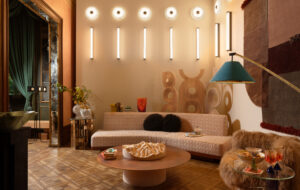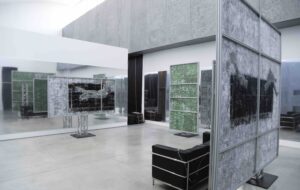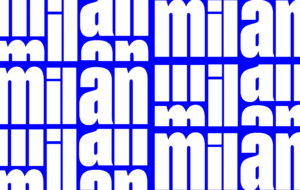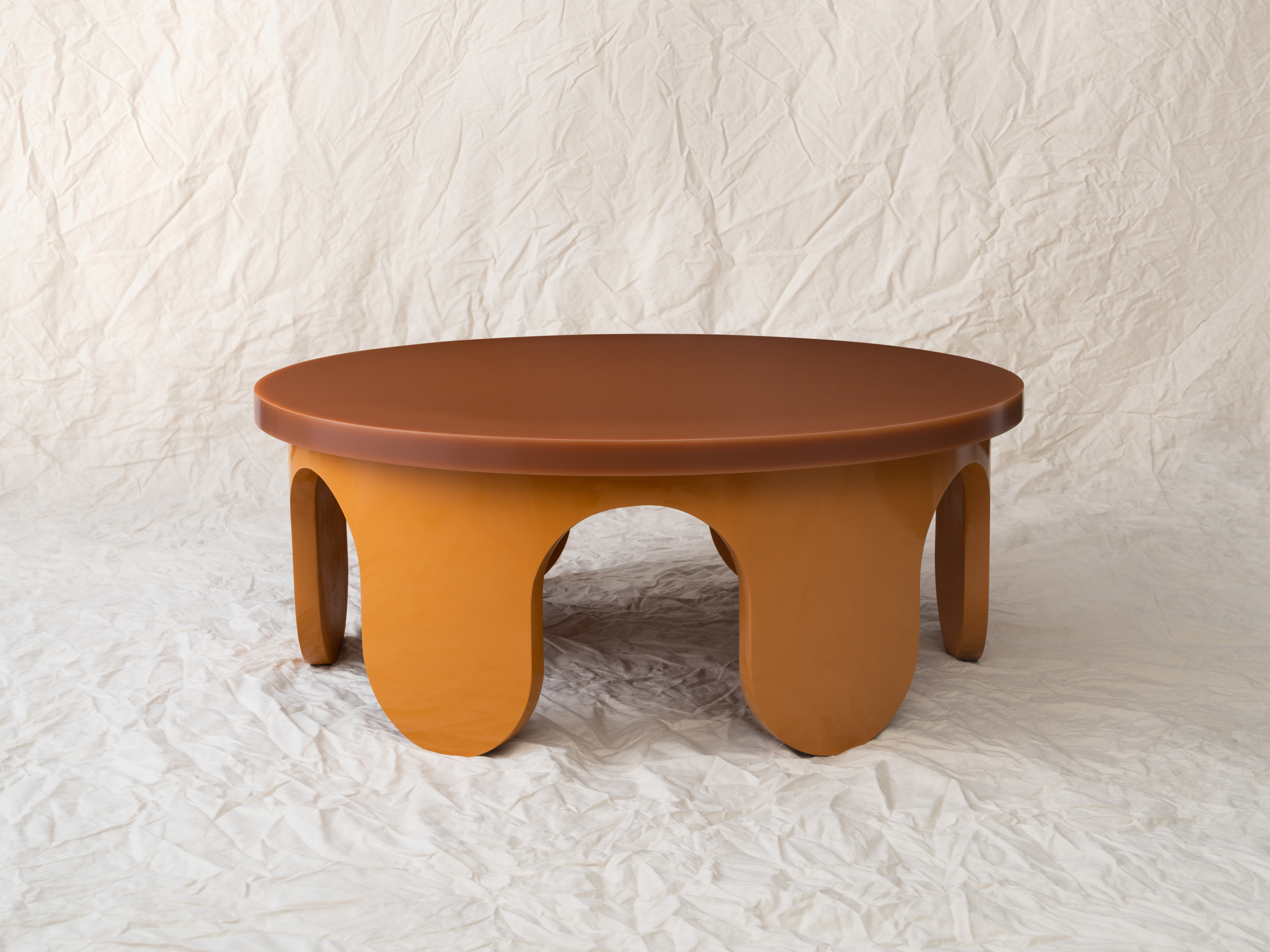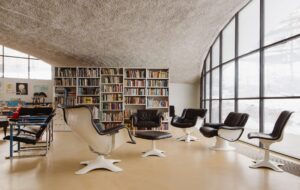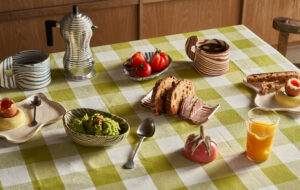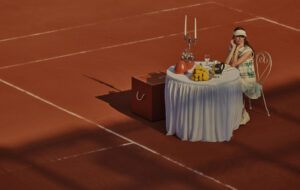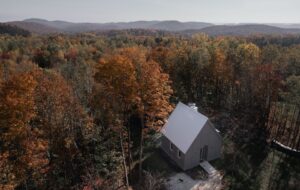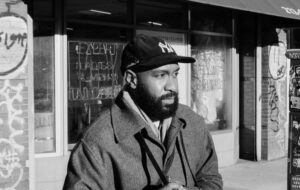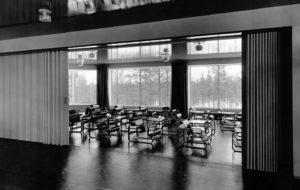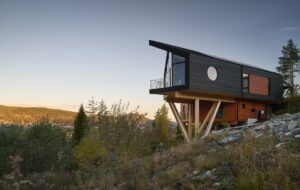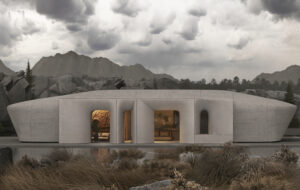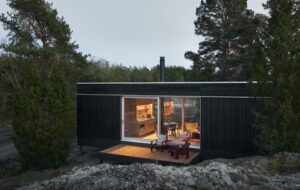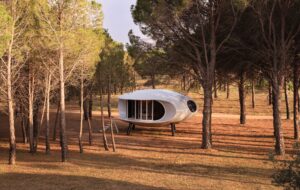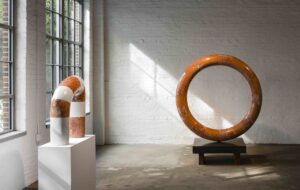

words Justin McGuirk
When Shigeru Ban decided to construct the dome of a new gymnasium in Japan from plywood, he saw it simply as a continuation of his search for efficiency. But his structural engineer wasn’t quite so confident.
Shigeru Ban would rather not talk about the World Trade Center. As one of the principal designers in the Think team, Ban’s part in the Ground Zero saga came to an end in late February when Daniel Libeskind’s design was picked from the final two. Ban is resigned to the fact that in the end it came down to politics. He has moved on and he is happy to talk about a project that is modestly proportioned, far removed from the glories of the world stage and evidently closer to his heart.
The Atsushi Imai Memorial Gymnasium was built for the Imai Hospital in the city of Odate, in the Akita prefecture of northern Japan. The region is renowned for its heavy snowfall, which regularly piles up at shoulder height, and so the gymnasium presented Ban with something of a challenge. An oval dome was the most efficient structure for spanning a sports hall, but it had to be able to bear the weight of an Akita winter. Ban enjoys challenges almost as much as he does flouting the conventional rules of materials. So the man who made his name building with paper tubes decided that this was an ideal opportunity to see how strong he could make a dome out of plywood.
There’s another dome in Odate, one of the world’s largest, designed by Toyo Ito for the Jukai stadium. That one relies on solid cedar with heavy steel trusswork to support the snow, but Ban is not impressed by that as a solution: “Timber is expensive and heavy and it’s not efficient because you need heavy steel joints, but the mayor asked them to make a timber dome, so they did.” Ban wanted a much lighter and cheaper solution, so he used a plywood called laminated strand lumber, which was thin but could be joined together and bent to form long, arching beams.
The plywood beams making up the dome were used two ways. Long members running the length of the gymnasium were joined together, edge to edge, in a continuous zigzag. This system of diagonal trusses was held in place between shorter lateral arches running across the dome. It was effective but it wasn’t easy getting planning approval for such an idiosyncratic design. Reams of data and a full-scale beam 28m long had to be submitted for testing. Ban was confident – more so than his structural engineer, who worked a little more steel into the design than the architect would have liked. Still, the dome has seen through its first winter uneventfully. “I’m very happy that I’ve had no phone calls from my client,” says Ban.
From inside the gymnasium the workings of the dome are fully exposed, in all their sophisticated beauty. As with the houses and pavilions that Ban has built out of paper tubes, there are no finishes disguising the means of support or the inexpensive materials. Ban’s structural solutions are so elegant that his standardised materials take on their own aesthetic.
From outside, the building, which is perched on a low hillock, is completely inscrutable. The gymnasium is sunk underground so that it does not lord it over the two-storey hospital and the surrounding low-rise houses. Only the dome of the roof and the eaves of the two entrances break the surface. The dome’s outer skin is composed of a layer of translucent polycarbonate overlaid with stripes of stainless steel. On the dome’s underside, light diffuses through the regular gaps in the trusswork so that the ceiling appears to glow.
This luminosity gives the main sports court a greater sense of openness than you would expect from a space so enclosed. Evidently the effect caught someone’s eye at Toyota. In a full-page ad in the Asahi and Nikkei newspapers, a plush Lexus sits in the middle of the gymnasium floor: “They were saying that the atmosphere in the car was like the space in the gymnasium, that it has a warm, open feel,” explains Ban. “But the entrance was too small to get the car in, so they had to superimpose it using a computer.”
In contrast to that expansive sense of space is the pool area, set to one side of the perforated screen that runs around the gymnasium. Ban has played up the subterranean secrecy of the pool, allowing daylight to penetrate only through thin strips of glass brick. “I wanted there to be a comparison between light space and dark space,” he says. “Recently a lot of buildings are light and light; I still like to have light and shadow.”
Ban feels that the gymnasium is an important building. It represents another development in what he sees as a continuous process. As he puts it: “The next step would be to use less steel.” There is no room for excess in Ban’s ideal of an optimum efficiency, and in this respect he likes to think of himself as one step ahead of his engineers. He will explain an idea and then lament: “But that was too advanced.” Where other architects with a similar reputation might have grown out of them, Ban seems to like taking on small-scale projects because of the opportunities that they present for refining his process.
With the World Trade Center disappointment behind him, Ban’s current projects are his now standard mix of the intimate and the monumental: a house in Connecticut, a bamboo pavilion in a St Louis park, an international competition to redesign the centre of Tianjin, China’s third largest city. Large or small, Ban will tell you that it’s about the process.
architect Shigeru Ban Architects
designers Shigeru Ban, Nobutaka Hirago, Soichiro Hiyoshi, Keita Sugai
structural engineer TIS & Partners – Norihide Imagawa, Yuuki Ozawa
main contractor Obayashi Gumi

